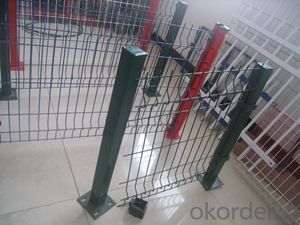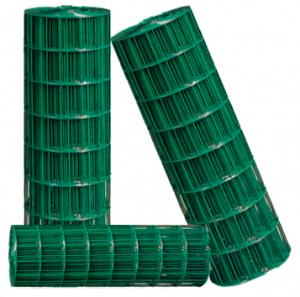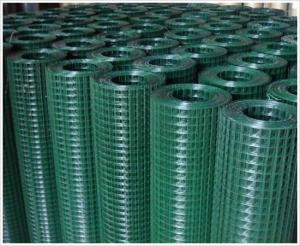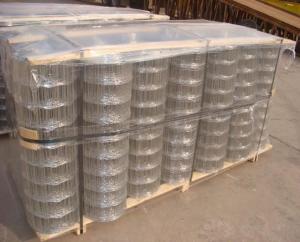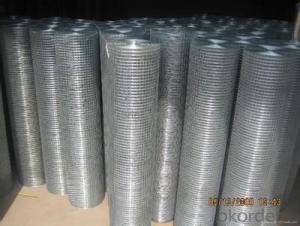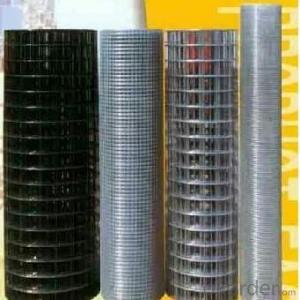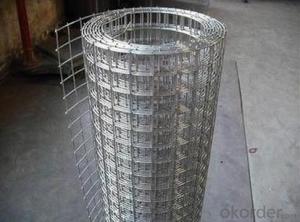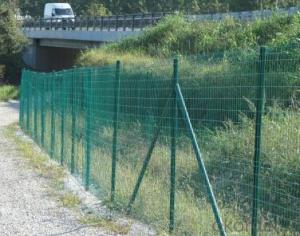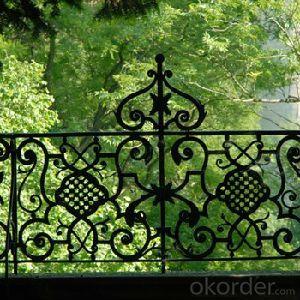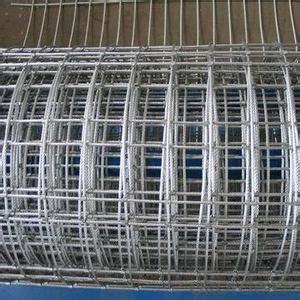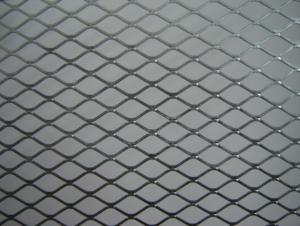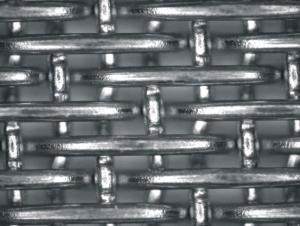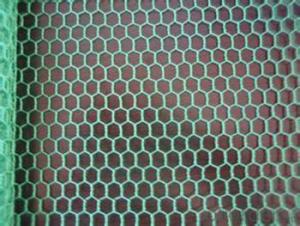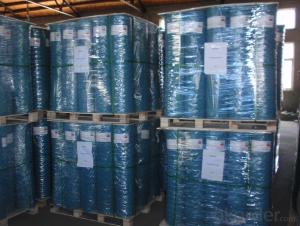MAG Fence, Anti Theft Net Good quality with Competitive Price
- Loading Port:
- Tianjin
- Payment Terms:
- TT OR LC
- Min Order Qty:
- 3500 pc
- Supply Capability:
- 20000 pc/month
OKorder Service Pledge
OKorder Financial Service
You Might Also Like
Specification
Description of MAG Fence, Anti Theft Net Good quality with Competitive Price
MAG fence, also known as anti-theft network, in the Shandong area is known as flower, manufacturing process is generally double stigma welder (manual welding has been eliminated). Each grid to edge aperture is generally 6.5cm-14cm. The use of wire roughness from 3.5mm-6mm. The wire material is generally Q235 low carbon wire. After ginning welded iron wire flower MAG net black. Mesh size general specifications for the 1.5 meters X4 meters, 2 meters X4 meters, 2 meters X3 meters.
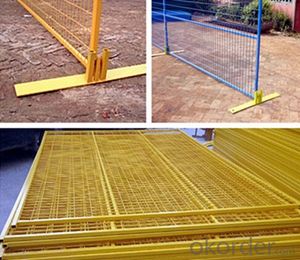
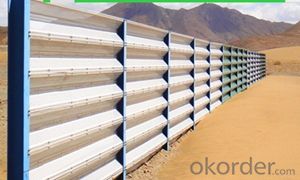
Fearture of MAG Fence, Anti Theft Net Good quality with Competitive Price
The general surface treatment for the cold galvanized (electric). There are hot galvanized, dip, spray. But overall, ninety-nine percent for the cold galvanized (electric). [1] MAG nets have to pay attention to the following points
1 wire diameter
MAG net holes smaller, requirements wire through the fine mesh, more big, requirements wire through the rough. For example the mesh aperture of 6.5cm requirements, iron size is 3.5mm-4mm. To fine a welding which is broken, and then rough too heavy, workers can not afford.
2 dimensions
Dimensions width MAG net is generally not more than 2 meters. Length is generally not more than 4m. More than 2 meters is a worker effort, two is the zinc plating is not good. The length can reach 6 meters, but not more than 6 meters. Generally more than 4 meters after the price will be increased.
The 3 spot welding is strong.
MAG fence welding, are generally more firmly, but if the worker is a novice, adjusting machine technology is not high, there will be open solder situation. This situation has, is bound to bring great loss to the customer and factory.
4 galvanizing technology
Zinc is MAG net problematic links, many workers are irresponsible, the boss a little inattentive, workers will likely soon put the galvanizing time is shortened, not the situation caused by zinc. The result will be subject to heavy loss of factories and dealers.
Specifications of MAG Fence, Anti Theft Net Good quality with Competitive Price:
Mesh: 3cm*3cm -- 18cm*18cm wire was: 3.5mm-6.0mm net long: 1.0m-4m net width: 1m-2.2m
Weave
After preflex welded. The surface can be galvanized. Galvanized. Dip.
Stainless steel material
Advantage of MAG Fence, Anti Theft Net Good quality with Competitive Price
The production of stainless steel mesh net material production technology has a long development process, in recent years with the rapid development of modernization, the stainless steel standard parts of the demand has increased dramatically, the MAG net of stainless steel standard parts almost entirely replaced the chrome plated carbon steel or galvanized standard parts. A sharp increase in demand for stainless steel standard parts to drive the technological progress of stainless steel wire, stainless steel wire used in China Steel and international common steel out of line, therefore, the metallurgical industry has formulated and revised two edition of the standard, in order to technological progress dynamic stainless steel wire, but have little effect. Until twentieth Century ninety time metaphase, along with changes in standard parts industry structure, many places have emerged a number of foreign and private enterprises for the production of wire drawing and standard parts, fundamentally changed the stainless steel wire production and use in the pattern of international derailment,
FAQ
1. Payment term: T/T, L/C, Western Union
2. Payment terms: 30% by T/T should be paid in advance, the balance payment paid againest the copy of B/L
3. Delivery time: shipping products within ten days, or negotiate according to total quantity.
4. Min order quantity: 50 pieces, or by negotiate with each other
- Q: Can steel wire mesh be used for creating partitions in warehouses?
- Yes, steel wire mesh can be used for creating partitions in warehouses. It provides a sturdy and durable solution for dividing space while allowing visibility and airflow. Additionally, steel wire mesh is easy to install and can be customized to fit specific warehouse requirements.
- Q: Can steel wire mesh be recycled?
- Yes, steel wire mesh can be recycled.
- Q: Can steel wire mesh be used for sun shading?
- Yes, steel wire mesh can be used for sun shading. Steel wire mesh is a versatile material that can effectively block sunlight and provide shade. It can be installed in various applications, such as fences, pergolas, or canopies, to create shaded areas and protect against direct sunlight. Additionally, steel wire mesh is durable and long-lasting, making it suitable for outdoor use. It can withstand harsh weather conditions and provide a reliable sun shading solution for both residential and commercial purposes.
- Q: Can steel wire mesh be used for soundproofing?
- Indeed, steel wire mesh can serve as a means of soundproofing, yet it possesses certain limitations. Primarily utilized as a reinforcement material, steel wire mesh lacks a specific design for soundproofing purposes. Nevertheless, it can still offer a degree of sound reduction by either obstructing or absorbing sound waves to some extent. The efficacy of steel wire mesh for soundproofing hinges upon several factors, including the thickness, density, and caliber of the mesh, as well as the frequency and intensity of the sound. In most scenarios, for optimal soundproofing outcomes, it is advisable to employ specialized materials and techniques that are explicitly crafted for this particular objective.
- Q: Can steel wire mesh be used for industrial shelving?
- Yes, steel wire mesh can be used for industrial shelving. Steel wire mesh is a strong and durable material that is commonly used in various industrial applications, including shelving systems. It offers several advantages, such as excellent ventilation, visibility, and easy maintenance. The open design of wire mesh allows for better airflow, making it suitable for storing items that require ventilation or cooling. Additionally, the visibility provided by the mesh allows for easy identification and access to stored items. The strength and durability of steel wire mesh make it capable of withstanding heavy loads, making it ideal for industrial shelving where heavy items or equipment need to be stored. Furthermore, steel wire mesh is resistant to corrosion, which is essential in industrial environments where exposure to moisture or chemicals is common. Overall, steel wire mesh is a practical and reliable choice for industrial shelving, providing strength, durability, ventilation, visibility, and low maintenance requirements.
- Q: Is steel wire mesh fire-resistant?
- Yes, steel wire mesh is fire-resistant.
- Q: What are the different flexibility options available for steel wire mesh?
- There are several flexibility options available for steel wire mesh, depending on the specific needs and requirements of the application. 1. Standard Flexibility: Steel wire mesh is naturally flexible, allowing it to be easily molded and shaped to fit various contours and structures. This standard flexibility makes it suitable for a wide range of applications such as fencing, construction, and reinforcement. 2. High Flexibility: For applications that require a higher level of flexibility, manufacturers offer steel wire mesh with enhanced flexibility properties. This type of mesh is designed to bend and stretch more easily, making it ideal for applications where the mesh needs to conform to irregular shapes or contours. 3. Rigidity: On the other end of the spectrum, steel wire mesh can also be manufactured with a higher level of rigidity. This type of mesh is less flexible and more resistant to bending or deforming. It is commonly used in applications where structural integrity and stability are crucial, such as in concrete reinforcement or industrial machinery. 4. Variable Flexibility: Some manufacturers offer steel wire mesh with variable flexibility options. This means that different sections of the mesh can have varying levels of flexibility, allowing for greater customization and versatility in specific applications. For example, a mesh may have a more rigid central section for added strength, while the edges are more flexible for easier installation. 5. Customization: Apart from the standard flexibility options, steel wire mesh can also be customized to meet specific needs. Manufacturers can adjust the wire diameter, spacing, or mesh size to achieve the desired flexibility characteristics. This customization ensures that the steel wire mesh is tailored precisely to the requirements of the application, providing optimal performance and functionality. In conclusion, the flexibility options available for steel wire mesh are diverse, ranging from standard flexibility to high flexibility, rigidity, variable flexibility, and customization. These options allow for the selection of a mesh type that best suits the specific needs of the application, ensuring optimal performance and functionality.
- Q: What are the safety considerations when using steel wire mesh?
- There are several safety factors to consider when utilizing steel wire mesh. To begin with, it is essential to don suitable personal protective equipment (PPE), such as gloves and safety goggles, when dealing with steel wire mesh. Mishandling the wire mesh can lead to cuts or abrasions due to its sharp edges. Additionally, cutting or handling the mesh may release small wire fragments, which can cause harm if they come into contact with the skin or eyes. Ensuring the secure fastening or support of the steel wire mesh is of utmost importance to prevent potential collapses or movements. This holds particular significance when using wire mesh for fencing or scaffolding purposes. It is vital to conduct regular inspections to identify any signs of wear, tear, or damage to the mesh, as compromised sections can pose safety risks. Moreover, proper handling and storage techniques are crucial to prevent injuries. When transporting or storing the mesh, it should be stacked or bundled in a manner that minimizes the likelihood of falling or obstructing pathways. Additionally, overloading or applying excessive force to the mesh should be avoided to prevent structural failure. Lastly, when employing steel wire mesh in areas where there is a risk of electrical contact, such as near power lines or electrical equipment, precautions must be taken to steer clear of electrical hazards. The conductivity of steel wire mesh can result in electric shock if it comes into contact with live electrical components. Hence, it is crucial to ensure proper grounding of the mesh and take appropriate measures to prevent accidental contact with electrical sources. To summarize, safety considerations for the use of steel wire mesh encompass the utilization of suitable PPE, secure fastening or support, regular inspections, proper handling and storage, and precautions against electrical hazards. By adhering to these safety measures, the potential for injuries or accidents associated with steel wire mesh usage can be minimized.
- Q: Can steel wire mesh be used for animal cages?
- Certainly! Steel wire mesh is a suitable option for constructing animal cages. This material is renowned for its durability and strength, which makes it an excellent choice for containing animals effectively. It is commonly utilized in the construction of cages and enclosures for various types of animals, ranging from small pets to birds, as well as larger animals like dogs and livestock. Due to its resistance to chewing and scratching, steel wire mesh provides an ideal solution for keeping animals securely confined. Moreover, the mesh's unique design enables proper ventilation and visibility, ensuring the animals' comfort and easy observation. Nonetheless, it is crucial to carefully choose the appropriate gauge and spacing of the wire mesh to prevent any potential escapes or injuries to the animals.
- Q: How is steel wire mesh used in reinforcement of hospitals?
- Steel wire mesh is used in the reinforcement of hospitals by providing structural support to concrete elements such as walls, columns, and beams. It helps to enhance the strength and durability of these structures, making them more resistant to seismic activities or other external forces. Additionally, steel wire mesh can be used to reinforce the flooring and roofing systems of hospitals, ensuring their stability and safety.
Send your message to us
MAG Fence, Anti Theft Net Good quality with Competitive Price
- Loading Port:
- Tianjin
- Payment Terms:
- TT OR LC
- Min Order Qty:
- 3500 pc
- Supply Capability:
- 20000 pc/month
OKorder Service Pledge
OKorder Financial Service
Similar products
Hot products
Hot Searches
Related keywords





